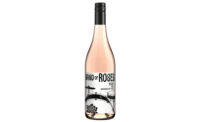eCommerce trends impact palletizing market
Beverage packaging options also influence palletizing solutions

The eCommerce industry has transformed the way consumers shop for products and changed their expectations of convenience. Although it once seemed convenient to stop in at a local store to pick up needed items, consumers now can skip the trip altogether and have items delivered to their doors. In turn, this affects how companies package, warehouse, handle and ship products, resulting in a variety of operational shifts.
Although this trend has taken a bit longer to affect the grocery market, beverages and other consumer packaged goods with longer shelf lives are a practical fit for online purchases. L.E.K. Consulting LLC forecasts that eCommerce sales will comprise 15-20 percent of total food and beverages purchases by 2025. This translates to substantial opportunities for packaging companies and package handlers who are looking ahead to prepare for the shift in sales and delivery platforms, the Boston-based global management consulting firm says.
David Snelson, director of sales at Portland, Ore.-based TopTier, predicts that this trend will trickle down to the palletizer industry in the near future. Rather than the large mixed and single-SKU pallets typically used for retail and warehouse fulfillment, eCommerce orders require smaller quantities, which, in turn, results in smaller cases, product dimensions and pallet sizes. Plus, to keep up with demand, palletizers need to operate at faster rates to palletize smaller loads.
TopTier machines are equipped to handle packages as small as 4-inches-by-4-inches, but some eCommerce orders require packages smaller than that, Snelson explains. Smaller packages are tough to convey and palletize, he notes. To better handle smaller packages, TopTier has modified its machines by replacing roller conveyors with a matte-top belting to provide complete support of small cases. TopTier machines also use a row pusher controlled by a variable frequency drive to maintain better control over the smaller, unstable cases when moving them onto the layer head, it says.
Kevin Heath, global robotics sales engineering manager at Dematic Corp., Grand Rapids, Mich., adds that this palletizing trend extends to smaller, urban retailers as well. Because of their small footprints, these stores do not have as much shelf or stockroom space, which means that they require smaller, more frequent deliveries. These trends are increasing pressure on brand manufacturers and equipment manufacturers that are introducing operationally inefficient processes in support of the retailer’s delivery requirements, Heath notes.
Yet, operations still need to shift to support market trends, experts say. In line with this, palletizer manufacturers recommend choosing equipment that is flexible enough to handle pallets of all shapes and sizes. “Flexibility to change is the primary consideration,” Dematic’s Heath explains. “Between internally driven marketing challenges due to packaging and ever-changing retailer delivery requirements, it is increasingly crucial to implement operational changes while not losing efficiency.” In particular, beverage-makers and handlers should be on the look-out for machines that easily can be reconfigured to support different load patterns, he adds.
Matt Wicks, vice president of product development at Honeywell Intelligrated, highlights the fact that opting for built-in flexibility capabilities can help users avoid additional reprogramming costs for their robotic palletizers down the line. “Many solutions require offline programming or files that must be uploaded to equipment for operational updates,” he explains. By comparison, the Mason, Ohio-based company’s robotic palletizing machines are equipped with the company’s Intelligen software, which allows operators to select predefined patterns or quickly and easily create new patterns when case sizes change, he says.
For added flexibility on its machines, Vancouver, Wash.-based Columbia Machine Inc. introduced its Variable Position Turner (VPT) technology to its high-speed, inline palletizers a few years ago. The technology, in conjunction with the company’s automatic lane adjustment feature, allows users to add new patterns and adjust existing patterns through a touchscreen human-machine interface. “This not only greatly reduces the cost to make pattern additions or changes but also the time required,” explains Sales Director Ted Yeigh. For example, because users can create new patterns on their own, they do not need the manufacturer to lay new patterns over existing patterns, he says.
TopTier’s method of case gapping allows its machines to quickly shift to accommodate layer pattern changes. The palletizers use electronic gapping, rather than the traditional, physical row stops, to space out cases. “This one feature allows the customer to make layer pattern changes without making any mechanical changes to the machine,” Snelson explains. “We provide the ability for the customer to load up to 100 different product codes, and we have the ability to run virtually any layer pattern.”
Opportunities in aluminum
ECommerce isn’t the only growth opportunity for palletizers and depalletizers, experts say. TopTier’s Snelson says the company has been experiencing demand from companies that are switching their products from glass bottles to aluminum cans as well as companies that are introducing new products in cans.
Although beer in cans is nothing new, more craft beers and wines are moving into cans, according to Nielsen, New York. Canned craft beer sales have nearly doubled in dollar sales in recent years, representing $820 million now versus $436 million back in April 2015, it reports. Similarly, canned wine sales have nearly doubled in the past year, totaling more than $81 million.
The growth in this packaging category has even brought new entrants to the palletizing and depalletizing industry. Ska Fabricating launched in 2012 in Durango, Colo., with an aim to become a world leader in small-footprint depalletizers. In March, the company, an offshoot of craft beer company Ska Brewing, celebrated the sale of its 500th Can-I-Bus small-footprint, semi-automated can depalletizer. The machine, which handles cans at speeds of 25- to- 400 cans a minute, originally gained a large following in the craft beer industry but has since attracted business in the wine, cider, kombucha, coffee, tea, spirits and water categories, the company says.
Last year, the company released its Half Pint mobile depalletizer, which is designed for mobile canners and breweries with tight space restrictions and tight budgets.
Futureproofing through durability
When choosing a depalletizer or palletizer to meet a company’s diverse needs, durability also is an important equipment feature. “We’re seeing a trend in the food and beverage industry for higher-quality and more serviceable machines,” Honeywell Intelligrated’s Wicks says. “End users are evaluating the total lifecycle costs of the equipment and are focused on higher quality and more serviceable features.”
In some cases, the cost consideration is taking a backseat to this performance aspect. “Many end users have felt the pain of using a lower-cost, lower-quality machine and ending up with a loss of confidence in the automation or not seeing planned return on investment,” he explains.
The company’s Alvey 890i and Alvey 891i high-speed case palletizers include maintenance-focused enhancements, such as semitransparent covers for enhanced visibility during operation and easily removable covers and guards that provide quick access to components that might require adjustment or replacement throughout the system’s lifecycle, Wicks says.
Experts note that flexible, durable, well-maintained machines of all kinds will best keep beverage operations moving and enable companies to meet changing and accelerating customer and consumer expectations. BI
Looking for a reprint of this article?
From high-res PDFs to custom plaques, order your copy today!







